
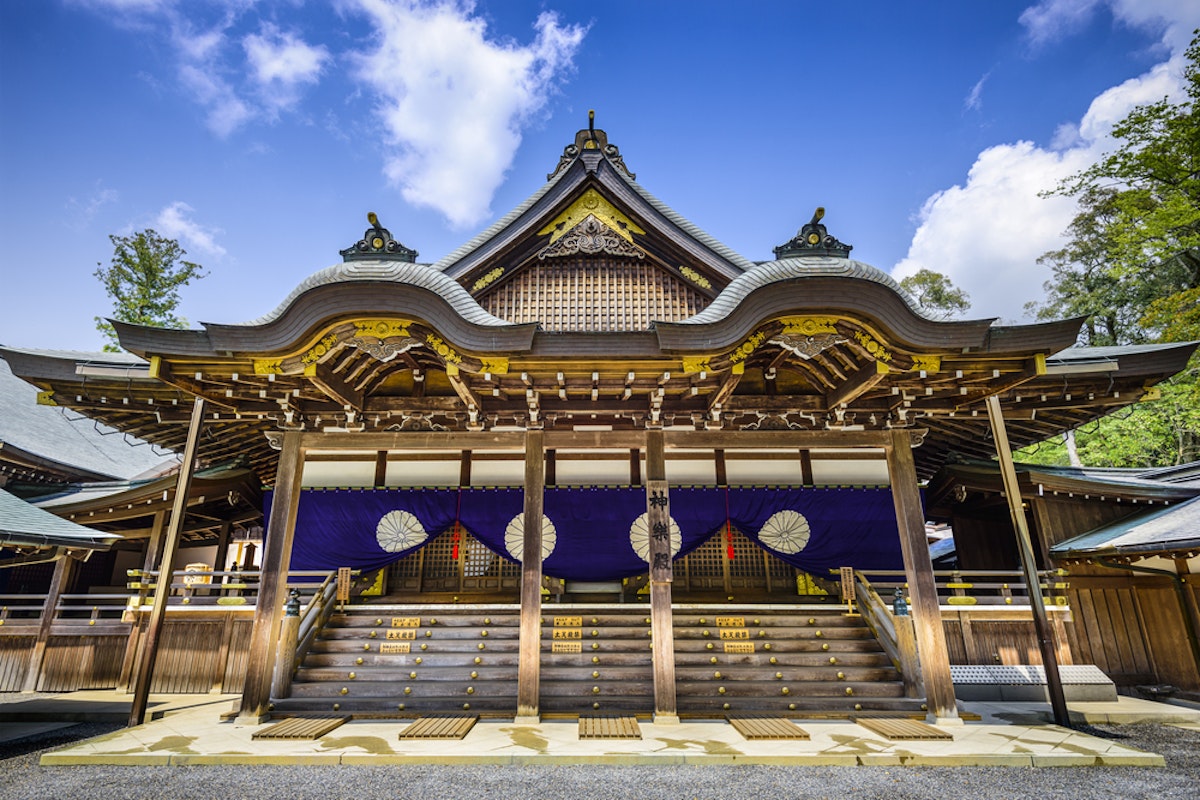
Nestled in the heart of Ise City, Mie Prefecture, lies the Ise Grand Shrine (伊勢神宮, Ise Jingū), a sacred space that has held profound significance in Japan's cultural and spiritual landscape for nearly two millennia. Known as the spiritual home of the Japanese people, this Shinto shrine is dedicated to the solar goddess Amaterasu, the ancestral kami (Shinto deity) of the Imperial family. The shrine's roots trace back to 4 BCE during the reign of Emperor Suinin, making it a beacon of classical Japanese history and a testament to the enduring power of faith and tradition.
The Ise Grand Shrine is not just one but a complex of main, outer, and old shrines, each exuding an air of tranquility and reverence. It is intricately connected with the imperial family, which further amplifies its historical significance. One such connection is with Princess Yamatohime and Empress Jito, figures of great importance in the shrine's history. The shrine is also known for its unique architectural style, called yuiitsu, which imbues it with a distinctive aesthetic appeal and stands as a symbol of Japan's rich architectural heritage.
Visitors to the Ise Grand Shrine partake in various religious ceremonies and festivals, offering prayers and making offerings at the shrine. Its location, overlooking the serene Isuzu River and near the iconic Meoto Iwa (Wedded Rocks), makes it a popular destination for tourists who can reach it via Ise-shi Station or Kyoto Station. Whether you are drawn by its historical allure, architectural grandeur, or the promise of spiritual purification, the Ise Grand Shrine offers a glimpse into the soul of Japan that is as enlightening as it is unforgettable.
The Ise Grand Shrine, also known as Ise Jingū, is a revered Shinto shrine dedicated to the solar goddess Amaterasu. Its legendary origins are deeply rooted in Japan's ancient history and mythology. According to tradition, the shrine was first established in 4 BCE during the reign of Emperor Suinin. It is believed that the emperor's daughter, Princess Yamatohime, spent 20 years searching for the perfect place to worship the sun goddess before she finally settled on the location of Ise. This sacred site has since become the spiritual home of the Japanese people.
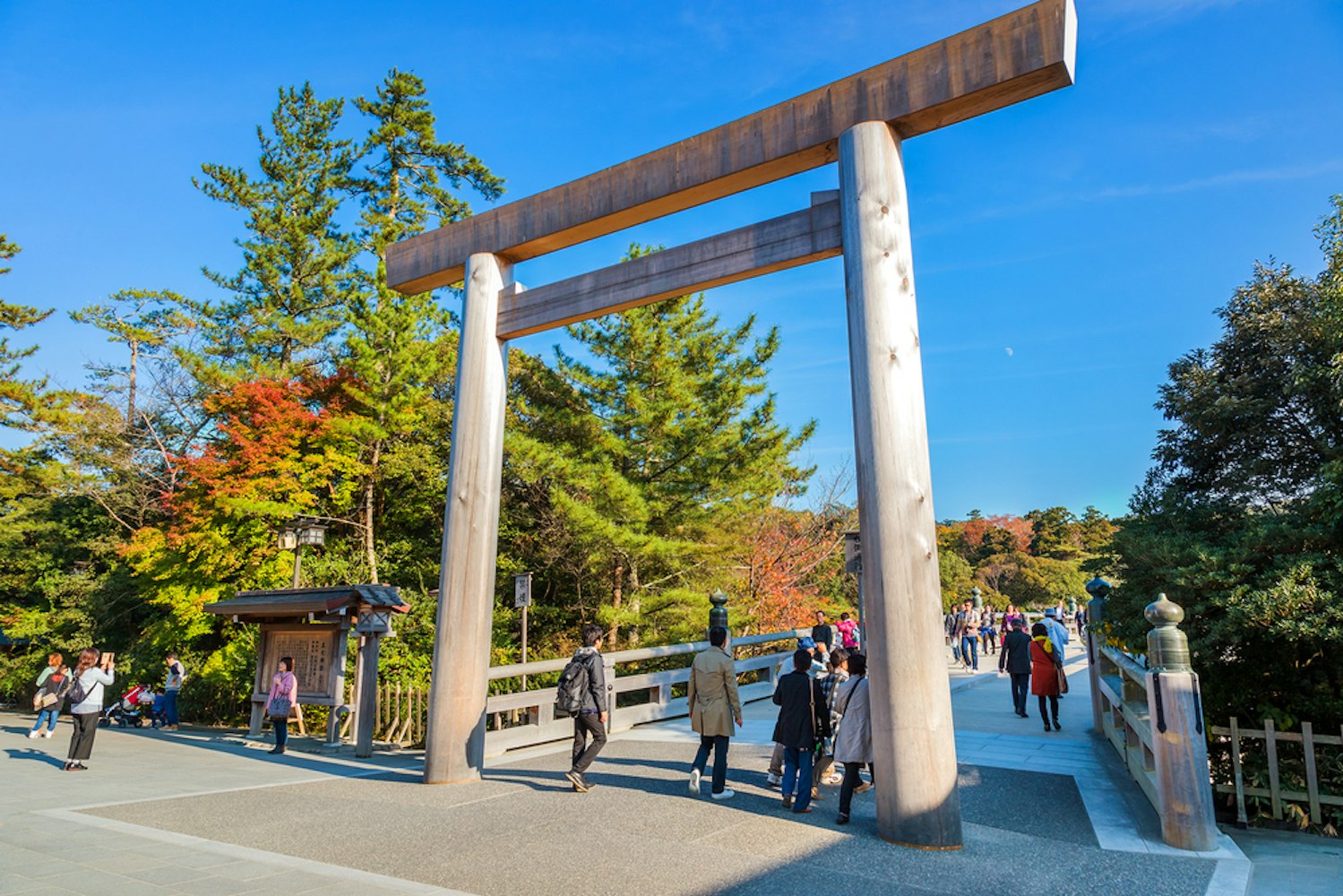
The shrine's connection to the Imperial family originates from the ancestral kami, Amaterasu-Omikami, who was enshrined in Naiku about 2,000 years ago. The original temple was built by Emperor Temmu, the first emperor to rule over a united Japan. Today, the Ise Grand Shrine continues to be a symbol of Japan's deep-rooted reverence for the divine and its commitment to preserving ancient Shinto traditions.
Over the millennia, the Ise Grand Shrine has witnessed countless historical events and transformations, yet it has always maintained its sacred character and significance. Despite being rebuilt every 20 years in a unique ritual called Shikinen Sengu, the shrine has retained the architectural style known as yuiitsu, which reflects the simplicity and purity of Shinto aesthetics.
The shrine complex is divided into two main parts: the Inner Shrine (Naikū) and the Outer Shrine (Gekū). Each shrine is surrounded by a high wooden fence, with the main sanctuary hidden from view to preserve its sanctity. The Naikū is dedicated to Amaterasu, while the Gekū is dedicated to Toyouke-no-ōmikami, the goddess of agriculture and industry. Through the ages, these shrines have served as a beacon of faith and cultural identity, drawing pilgrims and tourists alike to partake in its rich history and spiritual ambiance.
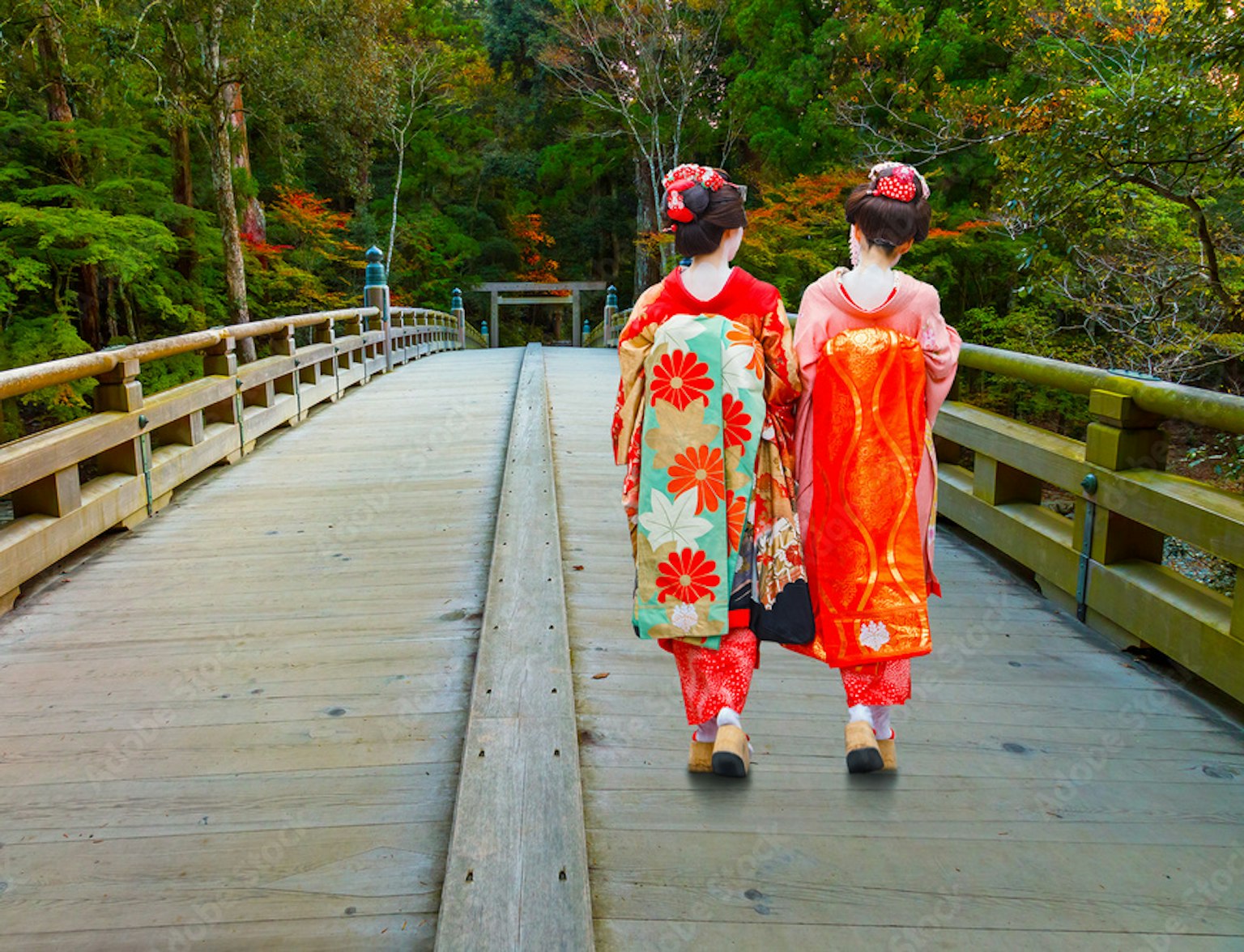
Visit one of the holiest religious places in Japan!
One of the most fascinating aspects of the Ise Grand Shrine is the Shikinen Sengu Ceremony, a unique tradition that involves rebuilding the shrine every 20 years. This ritual, which has been carried out since the reign of Emperor Suinin, is based on the Shinto belief in the cycle of death and renewal. It symbolizes the renewal of the sun goddess Amaterasu's energy and the purification of the shrine.
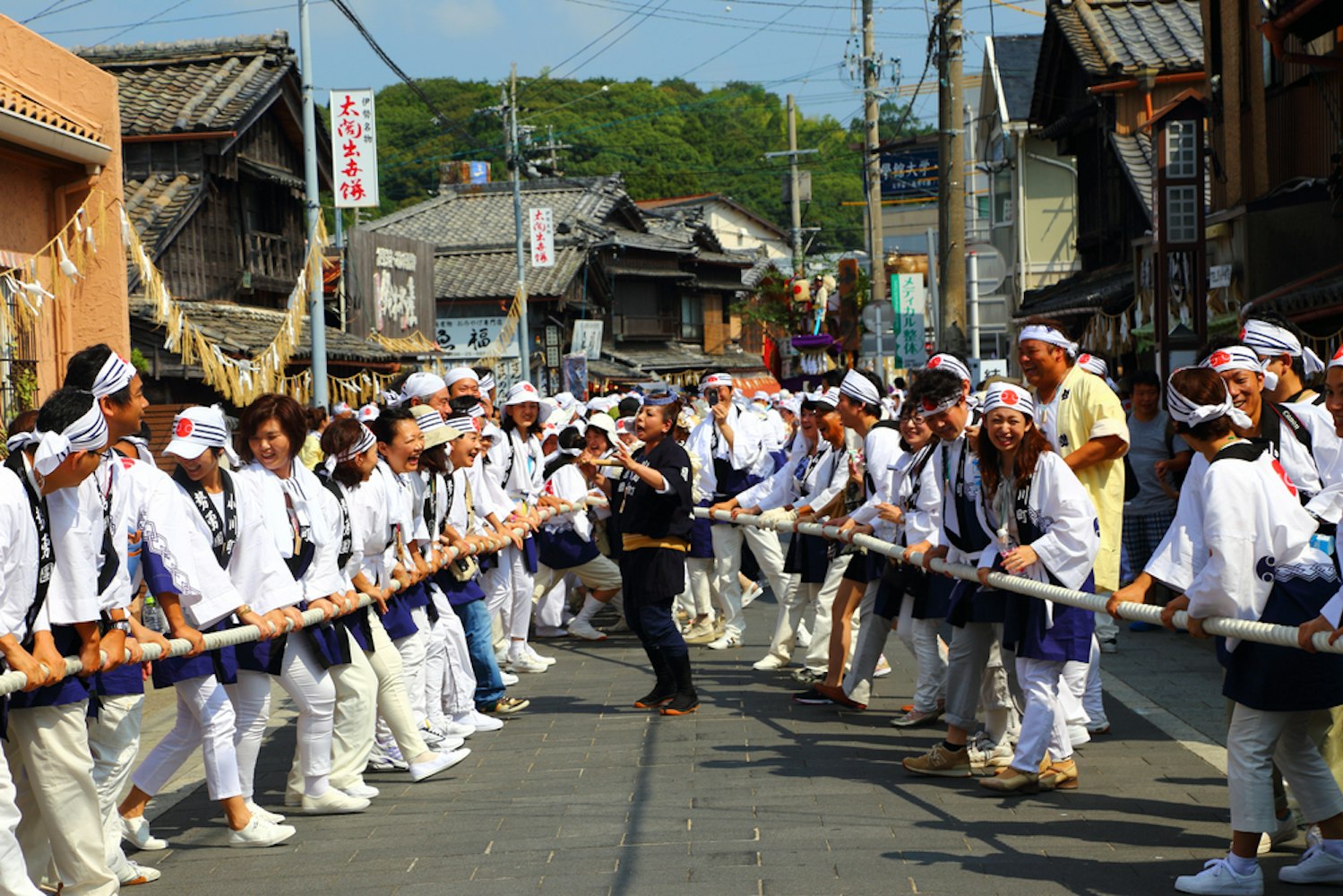
During the Shikinen Sengu, the shrine buildings are dismantled and new ones are erected on an adjacent site using traditional methods and materials. The sacred objects and deities are then transferred to the new buildings in a grand procession. This ceremony, which takes several years to complete, is a testament to Japan's commitment to preserving its ancient traditions and architectural heritage. It serves as a powerful reminder of the enduring significance of the Ise Grand Shrine in Japan's cultural and spiritual landscape.
The Ise Grand Shrine, a sacred Shinto shrine in Japan, is renowned for its distinctive architectural style known as yuiitsu shinmei-zukuri. This style embodies the simplicity and antiquity of traditional Shinto aesthetics, drawing inspiration from ancient rice granary buildings. Constructed from cypress wood, the shrine's design is a testament to Japan's architectural heritage and its deep-rooted reverence for nature.
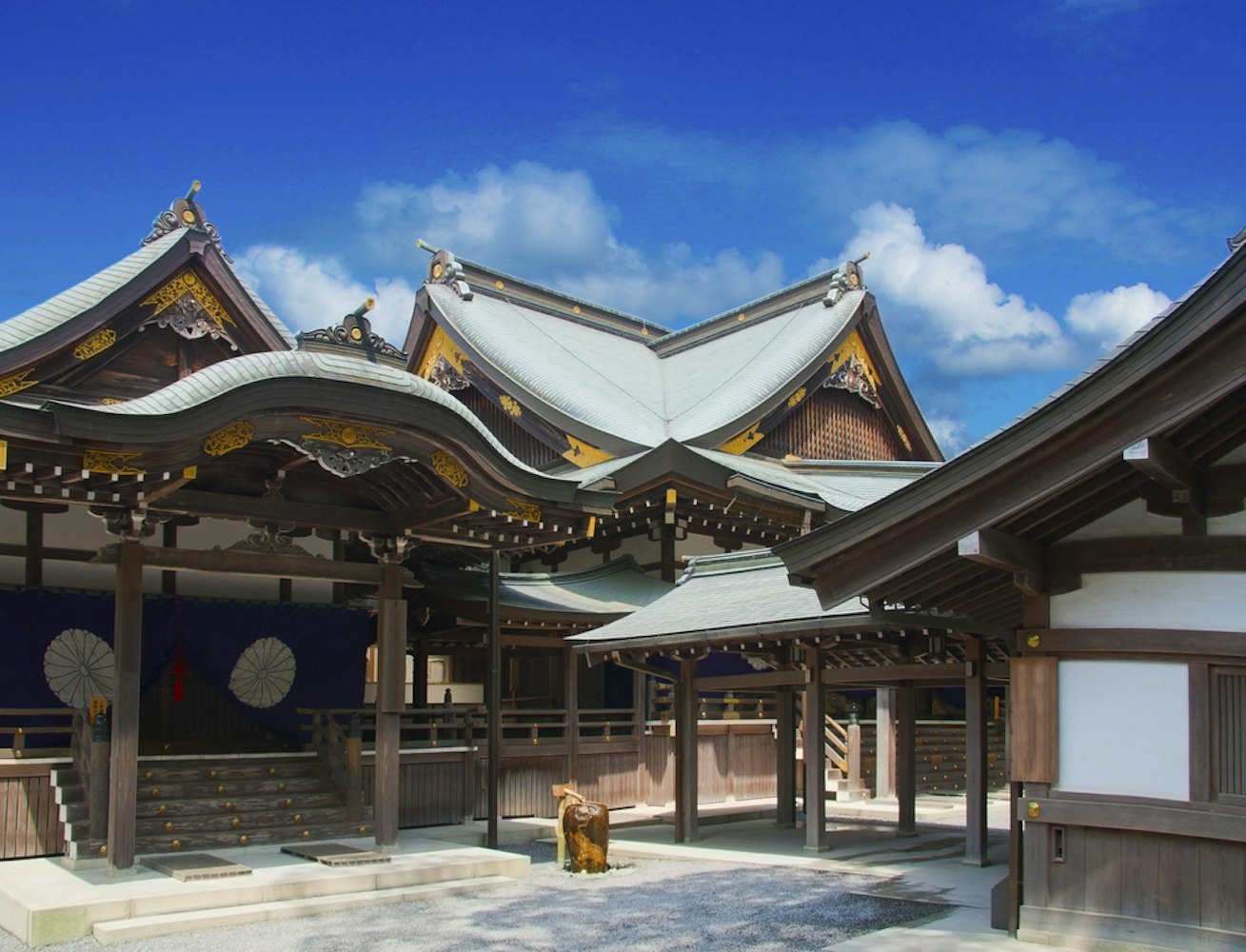
One of the most iconic features of the Ise Grand Shrine is the Torii Arch, a simple trabeated arch with perpendicular posts and a beam across the top. This arch serves as an entrance gate that marks the transition from the mundane to the spiritual world, reflecting the Shinto belief in the coexistence of the physical and spiritual realms. The austere structures made of new "hinoki" (cypress beams) further contribute to the serene and sacred ambiance of the shrine.
The Ise Shrine consists of two main complexes: the Inner Shrine (Naiku) and the Outer Shrine (Geku). Dedicated to the sun goddess Amaterasu, the Naiku is designed in a unique variant of the yuiitsu shinmei-zukuri architectural style, known for its simplicity and antiquity. Surrounded by a high wooden fence, the main sanctuary is hidden from view to preserve its sanctity.

On the other hand, the Geku is a separate shrine dedicated to Toyouke-no-ōmikami, the goddess of agriculture and industry. Like the Naiku, the Geku is also surrounded by a high fence, creating a secluded and pleasant land that provides a tranquil environment for worship and reflection. Both complexes are integral parts of the Ise Grand Shrine, representing Japan's most sacred place, and are popular tourist attractions visited by many people.
Apart from the main and outer shrines, the Ise Grand Shrine also includes several other structures that showcase the intricate details of traditional Shinto architecture. Among these is the Kagura Hall, a space where sacred dances and music, known as kagura, are performed during rituals and ceremonies.
Another noteworthy feature is the Ujibashi Bridge, which crosses the Isuzu River and serves as the main entrance to the Naiku. This bridge not only provides a physical connection to the shrine but also symbolizes the spiritual journey that visitors undertake when they enter this revered site. The architectural design of both the Kagura Hall and Ujibashi Bridge further enhances the spiritual significance of the Ise Grand Shrine, making it a beacon of ancient Shinto traditions and purification rituals.
The Ise Grand Shrine, known as Ise Jingu in Japan, is more than just a place of worship. It's a spiritual home for the Japanese people, holding deep significance in their religious beliefs and cultural heritage. The shrine is dedicated to the solar goddess Amaterasu Omikami, regarded as the supreme deity in the Shinto religion. This divine figure is believed to be the ancestor of the imperial family, further enhancing the shrine's status as one of Japan's most sacred sites.
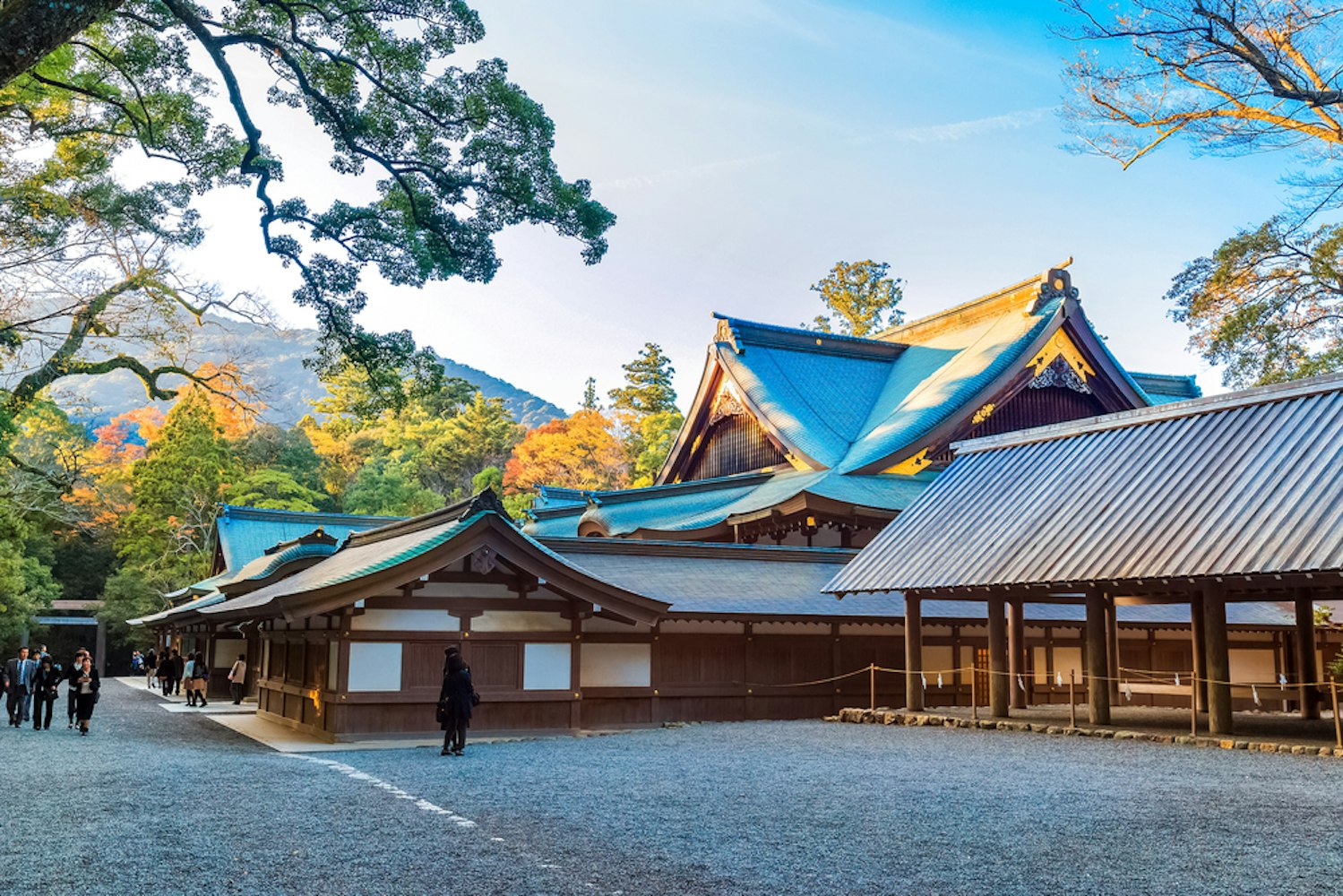
Housed within the main shrine (Naiku), the sacred mirror, one of the imperial regalia, represents the spirit of Amaterasu Omikami. This mirror is not visible to the public, symbolizing the eternal world of the deity and maintaining the sanctity of the divine realm. The shrine's secluded location, amidst a serene forest in Mie Prefecture, also contributes to its profound spiritual atmosphere.
The Ise Grand Shrine plays a pivotal role in Shinto practices, embodying ancient Shinto traditions that have been preserved for nearly 2,000 years. It serves as a permanent place for the Japanese to offer prayers and participate in purification rituals, reflecting their deep-rooted belief in the coexistence of the physical and spiritual worlds.
The chief priestess or "Saishu", traditionally a member of the imperial family, performs various important ceremonies at the shrine. Also, the Jingu priests conduct successive waves of rituals throughout the year, marking the changing seasons and praying for bountiful harvests. These practices reinforce the shrine's spiritual significance and its central role in maintaining the harmony between humans and nature.
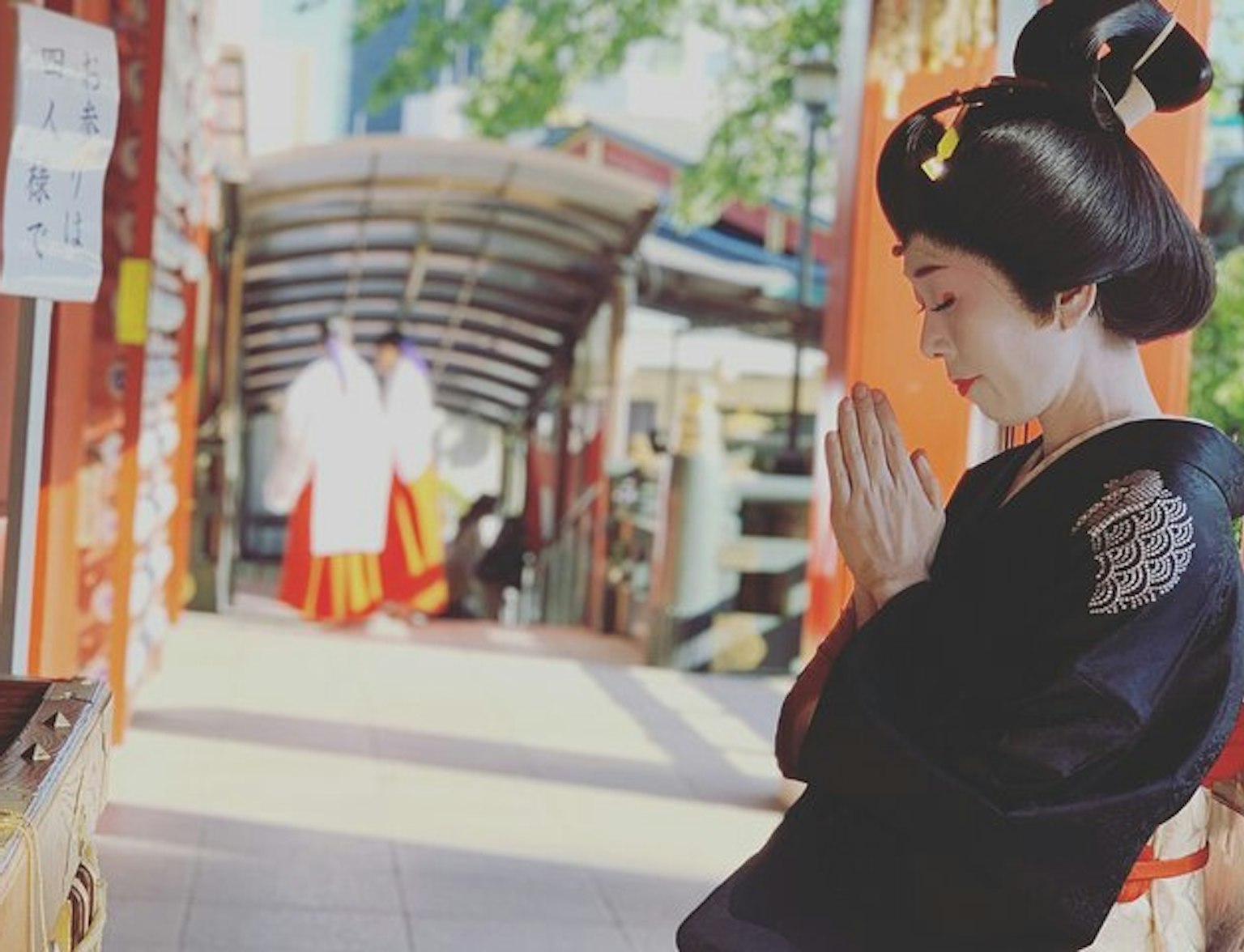
Related Tour: Learn more about Shinto practices in Kanda Shrine.
The cultural impact of the Ise Grand Shrine is evident in the numerous festivals and rituals celebrated there. One of the most notable is the Kinen-sai, a festival held in February to pray for a good harvest. During this event, sacred dances and Japanese drum music are performed at the Kagura Hall, creating a vibrant atmosphere that draws in crowds from across the country.
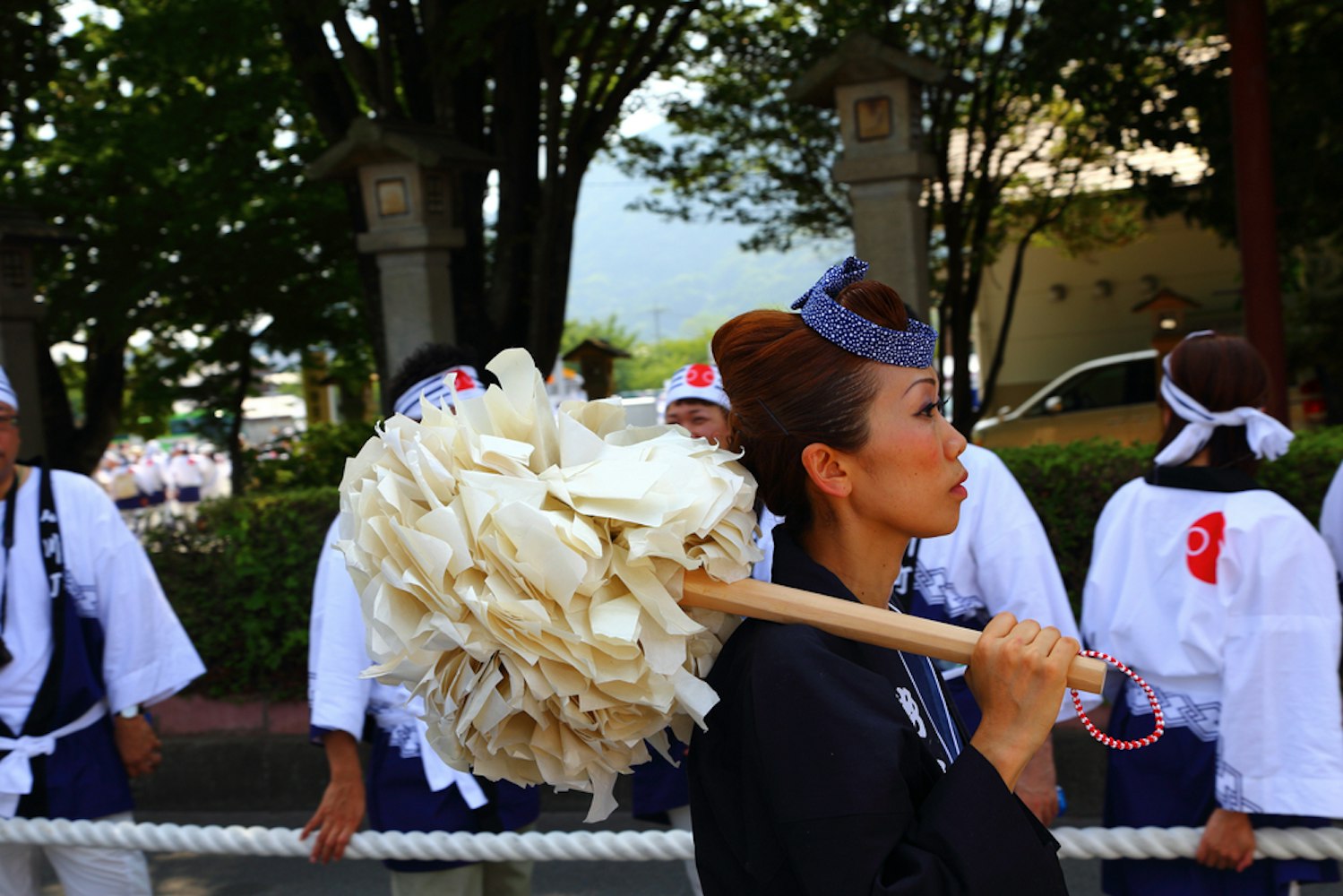
Another significant event is the Sengu ceremony, where the shrine buildings are rebuilt every 20 years in accordance with the Shinto concept of death and renewal. This ritual involves transferring the sacred mirror to the new shrine, symbolizing the relocation of Amaterasu Omikami. Such festivals and rituals not only highlight the cultural richness of the Ise Grand Shrine but also its enduring influence on the spiritual life of the Japanese people.
Reaching Ise Grand Shrine is a journey that's as fulfilling as the destination itself. If you're coming from Tokyo, the most convenient way is to take the Shinkansen (bullet train) to Nagoya, then transfer to a local train bound for Iseshi Station. Those traveling with a Japan Rail Pass can make good use of it for this route.
From Iseshi Station, it's just a short bus ride or a leisurely walk to the shrine complex. The Geku or Outer Shrine is closer to the station, while the Naiku or Main Shrine is about a 30-minute bus ride away. Remember to dress modestly as a sign of respect for the sacred sites you'll be visiting.
Upon entering the shrine complex, visitors are greeted by the Uji Bridge, which serves as the gateway to the spiritual realm. Walking across this bridge symbolizes leaving the mundane world and entering a sacred space. Before crossing, it's common practice to bow at the Torii gate, a traditional Shinto gesture of respect.
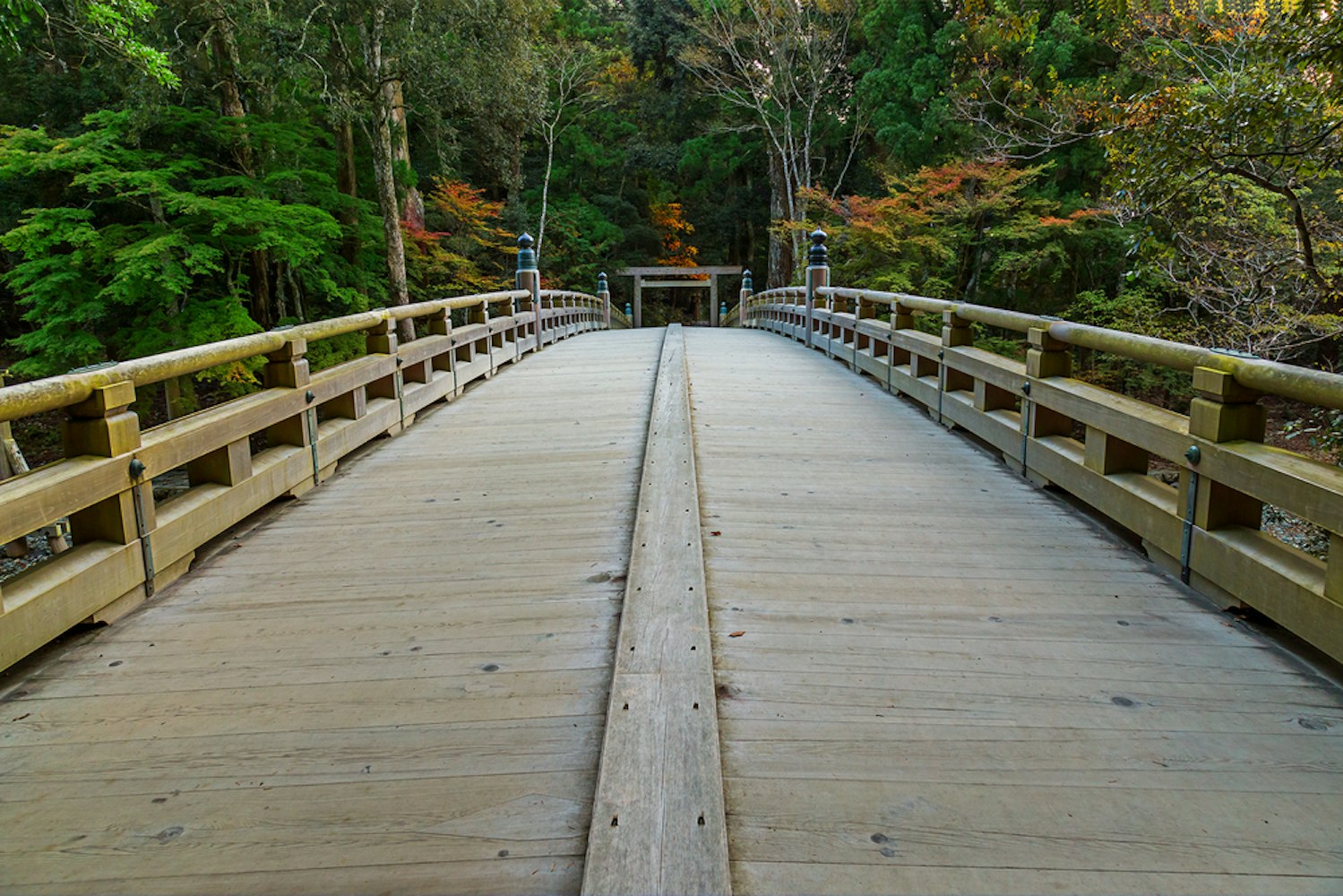
The main shrines, dedicated to the sun goddess Amaterasu and the food goddess Toyouke, are hidden from view behind wooden fences. While you can't see the sacred treasures housed inside, their presence is palpable in the tranquil atmosphere. The shrine buildings, built in the ancient Shinto style, are simple yet awe-inspiring, reflecting the Shinto belief in the divine essence of nature.
While the Ise Grand Shrine is undoubtedly the highlight of any trip to Ise, there are other attractions worth exploring in the area. The Isuzugawa River, which flows near the shrine, is a beautiful spot for a leisurely stroll. The nearby Okage Yokocho, a recreated Edo period street, offers a glimpse into Japan's past with its traditional shops and restaurants.
Another notable site is the Meoto Iwa, or Married Couple Rocks, located along the Ise coast. These two rocks, connected by a sacred rope, are considered a symbol of marriage and harmony in Shinto belief. By exploring these sites, you can gain a deeper understanding of Japanese culture and make the most of your trip to Ise.
The Ise Grand Shrine, with its deep spiritual significance and rich cultural heritage, offers a unique insight into the heart of Japan's Shinto traditions. Whether you're crossing the Uji Bridge, bowing at the Torii gate, or simply soaking in the tranquil atmosphere, a visit to this sacred site is an experience to be cherished.
Ready to embark on your own journey of discovery? At TripToJapan, we specialize in curating exceptional tours that showcase the best of Japan. Whether you're looking to explore the country's sacred shrines or immerse yourself in its vibrant cities, we have the perfect tour for you.
Don't wait to start your adventure. Visit our website today to book your tour and take the first step towards exploring the rich tapestry of experiences that Japan has to offer!
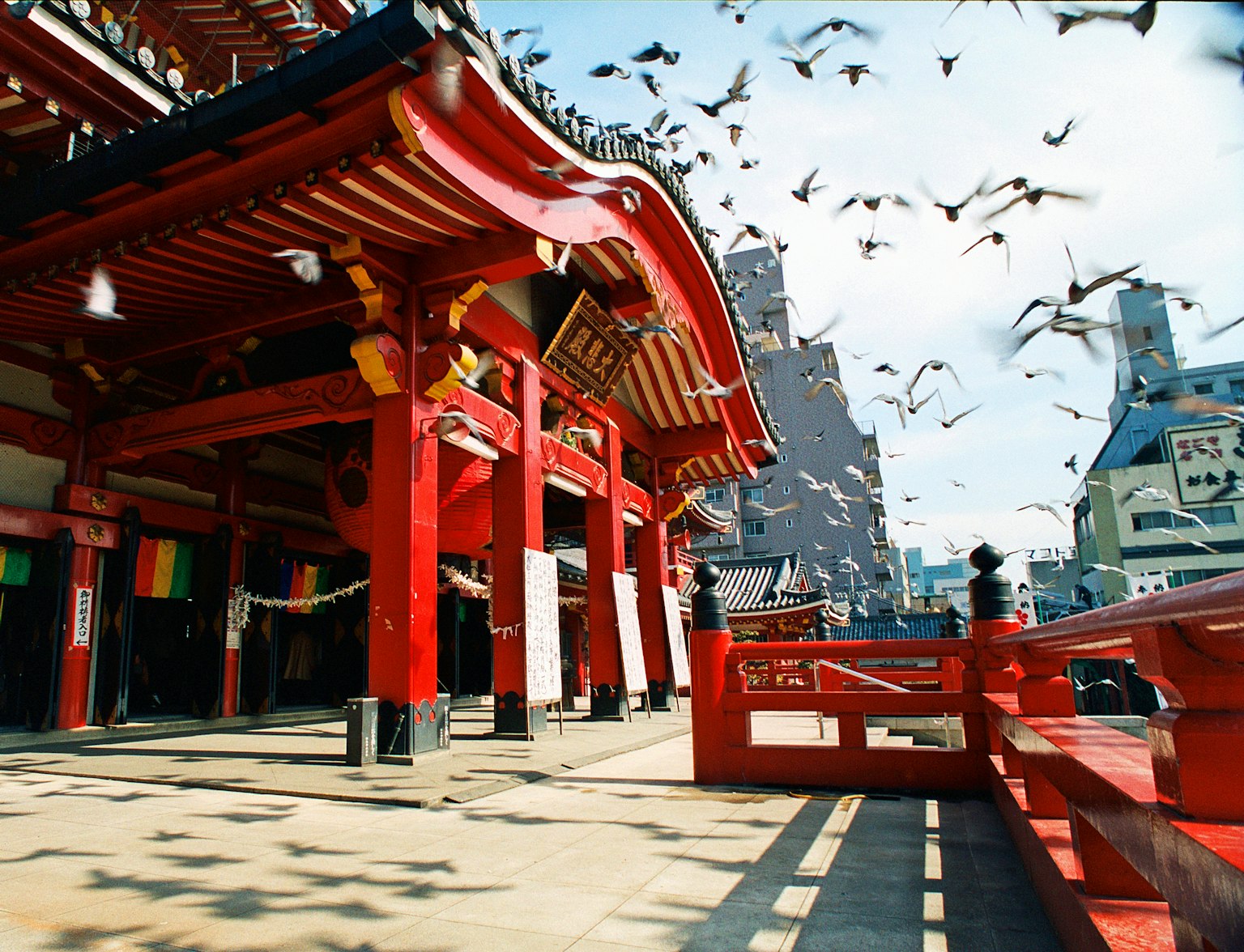
Explore the rest of Nagoya City with this tour.



